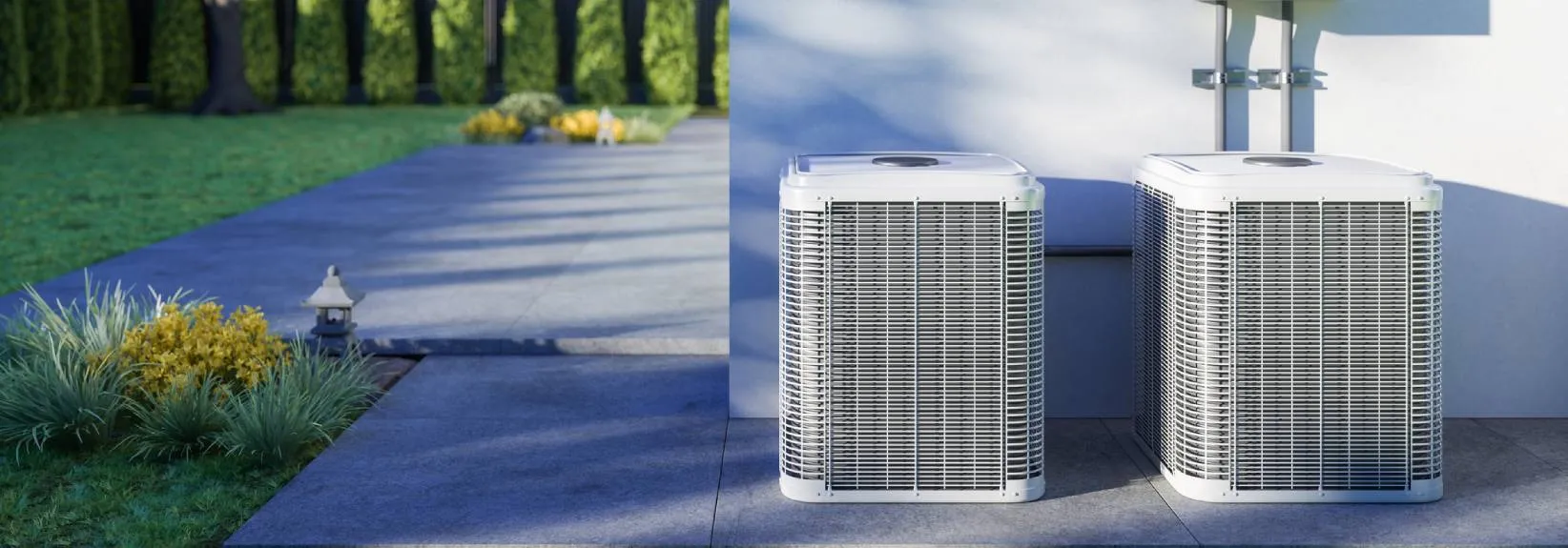Air Conditioner vs. Air Handler
If you’re searching for heating and cooling services, you may find confusing, sometimes contradictory information about various kinds of HVAC systems. One thing that garners a lot of confusion is the air handler. Is this the same as an air conditioner? We’re here to set the record straight.
What Is an Air Handler?
An air handler is the indoor part of some kinds of HVAC systems. It attaches to a network of air ducts that deliver conditioned air through the building. Air handlers differ in size, type and capacity, depending on the application.
Some consumers use the jargon of “air handler” and “blower” interchangeably, but this is not accurate. An air handler is an entire unit containing a blower and a number of other components, all of which work together to condition and circulate the air.
Does an Air Conditioner Use an Air Handler?
Generally, an air conditioner [shares|uses|utilizes} the furnace’s blower motor, so no air handler is required. However, in weather where home heating is not required, an air conditioner may be the lone HVAC equipment present. In this case, the indoor air handler runs in tandem with the outside unit, called the condenser.
In this setup, the AC unit’s air handler [blows|forces|pushes} indoor air [across|over|along the outside of} the evaporator coil, which absorbs heat and collects moisture, leaving the air handler to distribute cooled, dehumidified air back to the building using ductwork. Refrigerant lines link the air handler to the outdoor condenser, enabling the heat transfer to the outside. This will permit the air conditioning to preserve a constant, cozy indoor temperature and humidity level.
Does a Heat Pump Use an Air Handler?
This is where air handlers are most frequently found. In cold climates where heat pumps are less effective, they are sometimes installed alongside furnaces, creating what’s known as a dual-fuel system. However, advancements in cold-climate heat pumps make dual-fuel systems less typical these days. Because there is no furnace to lend its blower motor, heat pumps will need a dedicated air handler to move conditioned air.
Heat pumps work by extracting heat from the outside air and moving it inside through the indoor coil. The air handler blows air across the coil to acquire heat before circulating it all over the building. A heat pump can also be used for cooling, where it retrieves heat from the indoor air and transfers it outside, just like an air conditioner.
Does a Furnace Use an Air Handler?
No. Furnaces are made with a blower motor to move conditioned air. The blower is typically found in the interior of the furnace. It forces air across the heat exchanger, a metal component that exchanges heat from a fuel source to the air blowing across it. The fuel source can be natural gas, propane or oil, which is ignited to generate heat. Once warmed, the air is dispersed back through the ductwork system and inside the building.
What Are the Parts of an Air Handler?
The basic pieces of an air handler include:
- Blower: The blower is a motor-driven fan that disperses air throughout the ductwork. It moves air across the heating or cooling elements to manage the indoor temperature.
- Heating or cooling elements: Based on the type of HVAC system you own, the air handler may contain heating or cooling elements, including an evaporator coil or backup electric heat strip.
- Air filter: An HVAC air filter removes dust, dirt and other airborne debris from the air as it flows into the air handler to be heated or cooled. Air filter types and efficiency ratings vary based on system requirements. Remember to change your air filter regularly to avoid restricting airflow through the system.
- Dampers: Dampers are used to control airflow in buildings with zoned heating and cooling. They can be manually or automatically controlled to direct air to certain rooms as needed to keep a comfortable temperature.
- Humidifier or dehumidifier: Some air handlers include a humidifier or dehumidifier, which controls the indoor relative humidity level. A humidifier infuses moisture into the air in the winter, while a dehumidifier removes moisture in the summer.
- Control system: The control system is a way to regulate the air handler. It might include a thermostat, humidistat or other sensors to monitor the temperature and humidity throughout the building.
Schedule Air Conditioner or Air Handler Repair
If you’re having issues with your air conditioner, air handler or other HVAC components, Service Experts Heating & Air Conditioning is here to help out. Our squad of talented technicians can diagnose and repair any problems with your climate control system, making sure it runs safely and efficiently. We believe in our exemplary work so much that we guarantee every single repair with a one-year 100% satisfaction guarantee! For more information or to request air conditioning repair in North America, please reach out to a Service Experts office in your area today.

